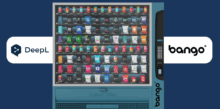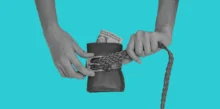Less than 5% of mobile app revenues this year from in-app billing…
by Sukey Miller

…but Bango forecasts in-app revenue growth of 600% in 2011
Demand for mobile applications has soared during 2010. Today’s smartphones have access to thousands of third party apps, accelerating consumption and in turn driving more smartphone sales.
Boosted by the smartphone wars and tablet devices from RIM, Samsung, Dell, Acer, Sharp and others, the number of mobile app downloads is predicted to rise to almost 50 billion by 2012, according to Chetan Sharma’s “Sizing Up the Mobile App Market” report. A simple summation of the “daily download” figures claimed by major OEM app store providers suggests that now, in 2010, downloads are already close to 20M apps every day.
But when it comes to the subject of how all these mobile apps are being monetized, the picture is not as clear. Most serious developers have a premium model attached to app distribution. In other words, at some point the end user pays. In the mobile market, in-app billing as a charging model has been talked about for a long time. This is the idea that the download happens without charge, but continued use of the app, or particular app features, would trigger a charge to the consumer. The thought is that this model provides for unobstructed access to the app to maximize distribution, followed by payment at the optimal time of usage, to maximize conversion rates.
Expectations for in-app payments are high, with many people in the industry seeing mobile apps as the perfect catalyst for this kind of micro-charging model. But in-app billing adoption has been slower than predicted – Bango reports that less than 5% of payments billed through its mobile payments platform in 2010 were of this in-app variety. Why is this?
One reason has been the app stores’ technical limitations. Most don’t offer the functionality to enable payments from within the app. But this limitation is starting to be lifted as app stores experiment to drive more revenue. RIM announced in September in-app billing support in early 2011, for example. The platform battle next year, according to Bango, will focus on developers as much as users, who will need to determine which of the app platforms to prioritise for development and distribution. Those that deliver most revenue will capture greatest mind-share.
Bango forecasts that for 2011 in-app charging will grow over 600% to account for close to 30% of all mobile app payments. The forecast is based on end of year trends from leading developers in the games, music and broadcasting segments.
Near-term the developers and publishers who monetize regular use of the app – streamed video and audio, games, news and alerts – will most readily capitalize on in-app payment features. Bango is also working with music and print publishers who are looking to develop revenue models beyond simple subscription-based paywalls. Here, the ability to charge per play, per video or even per-page, opens up many new possibilities.
Today, in-app payment models are starting to appear with the most innovative minds taking advantage of this option where available. Touchnote Inc. uses Bango’s in-app billing solution for its digital greeting card service. The company enables customers to download the app for free and then charges users for generating and sending post cards. Touchnote, available for download for the iPhone, Nokia, Windows 7 and Android devices, has proven this model to be very popular with consumers in these app stores.
Tablets like RIM’s PlayBook, supporting a front-facing camera could, at last, unlock video calling opportunities. Apps will look for the best available broadband connection – wireless or carrier – and bill from within the app based on usage. The year 2011, Bango believes, will see many more such innovations and greater experimentation with in-app revenue models from the mainstream media and content publishers.
Subscribe to our newsletter
Get the latest subscription bundling news and insights delivered straight to your inbox.




